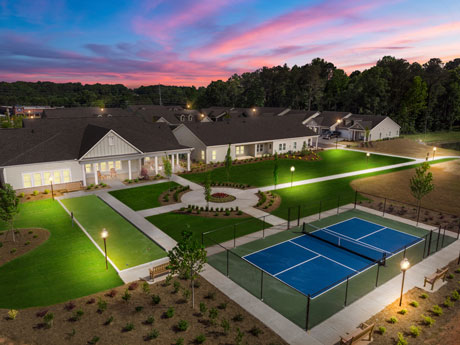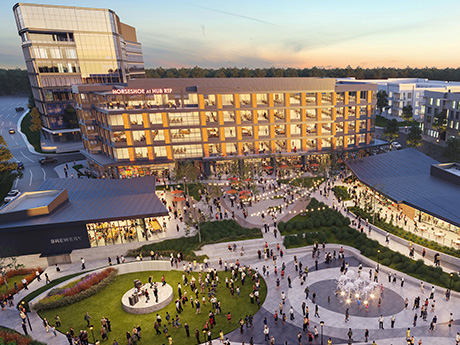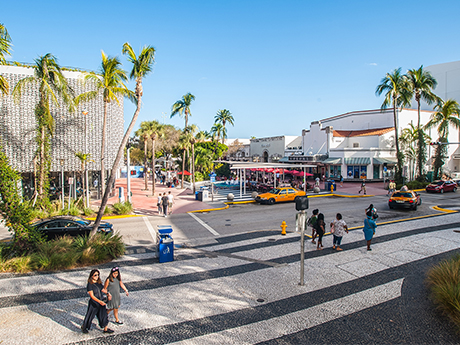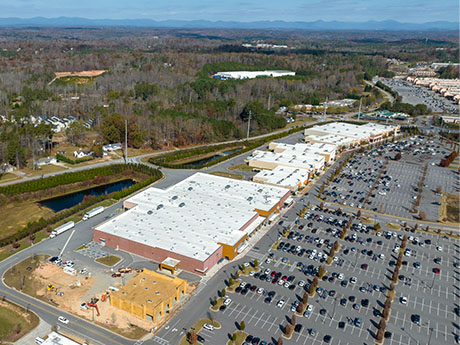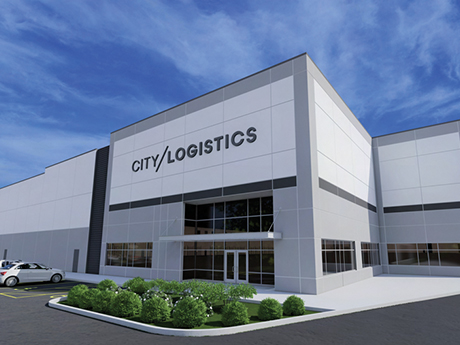When reflecting on Charlotte’s multifamily market over the past few years, several major trends drove unprecedented transaction volume — record-level rent growth, positive absorption despite a consistently robust pipeline of deliveries, strong population growth from high in-migration and rapidly increasing homeownership costs pricing residents out of the market. Charlotte has been a popular relocation destination for individuals and families, particularly from the Northeast, Midwest and other parts of the Southeast who are drawn to the low cost of living, warm climate and strong economy. Zillow ranks Charlotte as the No. 1 housing market for 2023, signaling a continued rise in home values and subsequent increased demand for rental housing from the growing population. In-migration has made Charlotte experience explosive growth and bolstered the population to over 2.7 million residents by year-end 2022, a 5.6 percent increase since 2018 compared to the national rate of 1.3 percent. Equally impressive is regional job growth, with non-farm payrolls increasing 7.9 percent over the same time frame. Much of Charlotte’s multifamily growth is attributed to capital investment from new employers across the metro, including Albemarle Corp.’s $180 million investment into a new research campus in University City bringing 200 new jobs, as well as …
Southeast Market Reports
Against the backdrop of rising interest rates, recent financial stress and murkiness over the Federal Reserve’s ultimate direction and economic implications, dealmaking in the first half of 2023 has remained exceedingly challenged across all real estate sectors as wide bid-ask spreads persist. However, compared to other spaces, rental housing in the Southeast remains relatively healthy from a fundamentals perspective, despite supply-driven softening in the near term. This trend is evident in many major markets, including cities like Atlanta. Occupancy and rent growth remain healthy in Atlanta. The rental vacancy rate for Atlanta as of January 2023 reached 5.4 percent, a 0.9 percent decrease over the previous year, based on data from the U.S. Census Bureau. This falls below the national average of 5.8 percent for the fourth quarter of 2022. The median rental rate in January 2023 was also up 4.3 percent year-over-year, reaching $1,941. Population growth, employment opportunities, infrastructure investments, a business-friendly environment and other demand drivers continue to intensify Atlanta’s need for housing; and long term, the outlook for rental housing in the metro is very strong. More than 6 million people now live in the region, according to recent Census data. The Atlanta Regional Commission predicts more …
Despite shifts toward remote and hybrid work, office rents continue to rise in North Carolina’s Triangle region. Among the 25 largest office markets in the country, Raleigh experienced the second-highest rent growth between 2019 and 2022 — a testament to continued tenant demand. We’re also seeing renewed interest in trophy assets, where the average asking rent has reached an all-time high of $43.35 per square foot. Additionally, the first quarter showed a 280,000-square-foot increase in total office supply, indicating investor confidence in Raleigh’s resilience. Compared to rival markets, Raleigh wasn’t overbuilt pre-pandemic. The market doesn’t have millions of square feet of vacant space downtown and is more balanced than its competitors, leaving plenty of opportunity for future growth. Another indicator of Raleigh’s growth trajectory is the 32 percent year-over-year increase in tours given by JLL’s Office Agency Leasing team this year. Given the current economic headwinds, we know that prospects are taking longer to make decisions about their space. However, we also know they are actively evaluating their options and making long-term plans for their team’s future needs. At buildings within our portfolio, badge swipes last quarter reached a post-pandemic peak utilization of 68 percent – just 13 percent shy …
A wave of new-to-market office tenants — specifically legal tenants following the influx of financial firms and tech companies — continue to expand their presence in Miami. The trend further solidifies the city’s spot as a top destination for companies seeking reduced taxes, strong talent and vibrant communities. Looking back at the first quarter of 2023, net absorption totaled over 81,000 square feet (compared to 76,000 square feet in the first quarter of 2022), marking the third-highest quarterly total since 2020. Most leasing activity occurred in the Central Business District (CBD) and in Class A product in Wynwood and Coral Gables as tenants continue to lease high-quality space. However, the lack of availability in quality product, as well as the overall economic uncertainty, has led to a slowdown in leasing volume to start 2023 — particularly among new-to-market tenants. Leasing activity totaled 750,000 square feet in the first quarter compared to 1.5 million in fourth-quarter 2022. The quarter closed with a 16.3 percent vacancy rate, the lowest level since the onset of the pandemic in early 2020. Class A availability fell 260 basis points to 21.1 percent year-over-year with the largest drops recorded in downtown Miami, which fell 540 basis …
Miami is a vivacious city renowned for its scenic beaches, sunny climate and dynamic nightlife. The South Florida city is also a hub for a flourishing retail industry, which serves an eclectic blend of both locals and visitors. Miami’s retail market is characterized by its diversity, with a broad spectrum of retailers ranging from luxurious, high-end boutiques to small, locally owned businesses. This range of retailers is a reflection of the city’s diverse population, which includes a sizable Hispanic community, as well as individuals from all corners of the globe. Consequently, Miami’s retailers must be adept at catering to a wide range of tastes. One of the most notable trends in the Miami retail market in recent years has been the growth of e-commerce. Like many other cities around the world, Miami has seen a significant increase in online shopping. This has presented both challenges and opportunities for retailers in the city. On the one hand, the rise of e-commerce has led to increased competition for brick-and-mortar retailers in Miami. Online retailers such as Amazon and Walmart have made it easier than ever for consumers to shop from the comfort of their own homes, and this has put pressure on …
Five blocks doesn’t seem that far. It’s about a quarter of a mile, or 560 steps. But, it’s just a hair past convenient for today’s office workers. Now more than ever, tenants are seeking an office experience that is dynamic and energized with amenities. They want great options for coffee, lunch or happy hour that are steps away, not blocks. If it’s not right outside the office, it’s not close enough. In Atlanta, the Midtown submarket is still where the action is. In 2022, Midtown had 775,652 square feet of positive absorption, which was the highest in the metro according to Cushman & Wakefield. In keeping with the flight-to-quality trend, Atlanta leasing activity last quarter was dominated by Class A product, which accounted for 75.6 percent of all transactions. Most of this activity occurred in Midtown. With a Walk Score of 87, Midtown is Atlanta’s most walkable submarket. But even there, it’s the vertically integrated office developments that bring a new layer of urban density that are rising above the rest. Not only are they seeing more leasing demand, but they are also experiencing a constant hum of activity and energy due to immediate access to great retail and restaurants. …
Atlanta has historically been a favorite metro for real estate investors to consider when it comes to a market that checks all the boxes. The Peach State Capital and its surrounding suburbs always have been a beneficial and desirable region for residents to live and work. Topping the list as the most popular city for apartment renters in 2022, Atlanta offers more benefits to its residents than just an affordable city to live. Other benefits of living in and around the city include professional sports teams, a rich arts and entertainment scene and renowned restaurant and retail lineups, among others. Hartsfield-Jackson Atlanta International Airport also offers domestic and international flights to practically anywhere in the world, and it’s situated minutes from downtown. Home to 17 Fortune 500 company headquarters, including prominent names such as The Home Depot, United Parcel Service (UPS), Coca-Cola and Delta Airlines, Atlanta’s job growth is outpacing the rest of the country. Coming out of the pandemic, Atlanta recorded a job growth rate of nearly 23 percent since April 2020, which outperforms the comparative U.S. metric of 11.7 percent in the same time period. Atlanta has also historically held an unemployment rate below the national average. With …
The Atlanta industrial market needs very little validation when it comes to answering the question “Why Atlanta?” More than a dozen companies started or based in Atlanta have grown over the past decade to valuations above $1 billion. Metro Atlanta had the second highest rate of job growth in the nation among large metro areas (6.7 percent), according to the U.S. Bureau of Labor Statistics. So rather than ask “Why Atlanta,” the better question is “Where in Atlanta?” As the Southeast’s population continues to grow, the metro Atlanta area continues in equal parts to add density to its thriving urban core as well as expand its suburban reach. With limited geographic barriers to development, outlying towns are quickly becoming absorbed into the definition of the Atlanta area. This persistent growth is placing demand on industrial space at an all-time high, requiring a nuanced view of site selection within the Atlanta MSA. The four corners of the Atlanta market reach nearly 60 miles from the urban center in each direction along highways I-75 and I-85, with new speculative projects under construction as far out as Adairsville, Commerce, Locust Grove and La Grange. Its breadth now includes Bremen and Rutledge in either …
Affordable HousingBuild-to-RentGeorgiaMarket ReportsMultifamilySingle-Family RentalSoutheastSoutheast Market Reports
Why Investors Should Love Atlanta’s Multifamily Market
by John Nelson
Like most of the country, the metro Atlanta multifamily market has experienced a dramatic storyline over the past three years. While the continuing plot twists are difficult to predict, important cues suggest Atlanta’s multifamily market will reestablish a solid upward path quicker than many other cities in the country. Economic strength Atlanta’s economic fundamentals make it a favored market for investors, lenders, new residents, and business relocations. Today, metro Atlanta’s population stands at approximately 6 million, growing by 64,940 in 2022. Atlanta also added 126,400 new jobs in 2022. Georgia’s unemployment rate of 3.1 percent is below the national average of 3.6 percent. These figures are a key part of Atlanta’s desirability as an investment market and an indicator of the region’s ability to rebound quickly from cyclical economic disruptions. Record volume Atlanta is a top 10 U.S. market for multifamily inventory and investment. As the nation experienced an 11-year economic expansion after the Global Financial Crisis (GFC), Atlanta’s multifamily sales volume averaged between $7 billion and $9 billion annually. When the pandemic hit in March 2020, most industry participants expected a major transaction pullback. The reality proved different. Sales volume dropped initially but rebounded sharply for a full-year 2020 …
National headlines report Amazon, arguably the largest warehouse user in the country, curtailing demand and, in some cases returning space back to landlords. This is sandwiched by stories detailing rising interest rates and land prices, stricter entitlement guidelines and NIMBYs working to apply the brakes on new developments. But, in “The Land of Pleasant Living,” (a Baltimore nickname made popular by the smart advertising of a local beer), the industrial revolution continues. And, for good reason. More than 2.3 million square feet of industrial/warehouse space was leased in the greater Baltimore metropolitan region in fourth-quarter 2022, with a net absorption of more than 1.2 million square feet of space, contributing to an overall vacancy rate of 4.5 percent. Additionally, more than 13 million square feet of space is currently under construction and rents have soared more than 50 percent over the past two years, with an average rent of just under $8 per square foot in late 2022. Significant leases signed in fourth-quarter 2022 included Baltimore International Warehousing & Transportation’s 244,304-square-foot lease at 5250-5330 Holabird Ave.; Amazon’s 241,962-square-foot lease at 1713 E. Patapsco Ave. and the 168,655-square-foot lease executed by Transdev at 1610 Wicomico St. Baltimore is contained within …



